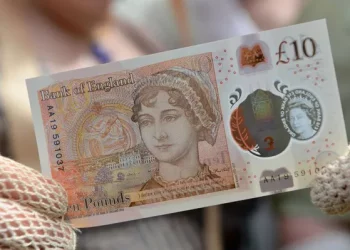The beleaguered yen rose from a one-year low against the U.S. dollar and a 15-year trough against the euro on Wednesday as Japanese authorities threatened to intervene and investors shifted focus to the Federal Reserve’s policy decision later in the day.
Overall, the dollar was on the defensive against some major currencies after U.S. data showed an economy slowing in the wake of the Fed‘s most aggressive tightening since March 2022.
The greenback was last down 0.35% at 151.2 yen after more hawkish than usual comments from Japan’s top currency diplomat, Masato Kanda.
It hit a one-year high on Tuesday as the yen slid after the Bank of Japan redefined its 1% ceiling on 10-year government bond yields as a reference rate rather than a hard cap.
The change disappointed many investors who had expected a stronger move away from ultra-loose monetary policy.
“Kanda’s comments put a bit of a lid on dollar/yen overnight,” said Vassili Serebriakov, a currency strategist at UBS in New York. “It’s not a particularly sharp reversal. It cooled off some of the upside momentum.”
It wasn’t enough to close the wide gap in bond yields between Japan and other countries, which is responsible for the yen’s nearly 14% drop against the dollar this year.
The yen traded weaker than 160 per euro for the first time since 2008 on Tuesday, but recovered slightly to 159.36 per euro on Wednesday, up about 6%.
“The market will definitely try to find out where the red line is for the Ministry of Finance,” said Alvin Tan, head of Asia FX strategy at RBC Capital Markets.
“It’s clear that it’s not at 150 (per dollar), but you don’t want to be out in front when the Japanese authorities intervene.”
Wednesday’s data showed slowing momentum in the world’s largest economy.
U.S. manufacturing contracted sharply in October after showing signs of improvement in previous months, as new orders and employment slumped.
The Institute for Supply Management (ISM) said its manufacturing PMI fell to 46.7 last month from 49.0 in September, which was the highest reading since November 2022. It was the 12th consecutive month that the PMI remained below 50, which indicates contraction in the manufacturing sector.
Data also showed that U.S. private payrolls rose less than expected in October, and wage growth moderated. Private payrolls rose by 113,000 jobs last month after adding 89,000 in September, the ADP National Employment Report showed. Economists polled by Reuters had forecast private payrolls to rise by 150,000.
The dollar has tracked movements in U.S. Treasury yields, which have risen on a combination of concerns about longer-term budget deficits and a resilient economy despite several rounds of interest rate hikes by the Fed.
“But if we see a slowdown in U.S. data, that could be a stronger signal that yields would be capped,” UBS’s Serebriakov said. “We haven’t seen that yet, so the risk is more upward pressure on yields, which means the dollar may actually remain supported.”
With the data out of the way, investors are now focused on the Fed’s rate decision later on Wednesday. Economists expect the Fed to keep rates on hold when it announces its decision at 1800 GMT (2 p.m. ET).
Investors will be scrutinizing Chairman Jerome Powell’s comments for clues on how long rates will stay at the current level of 5.25% to 5.5%, and whether there’s a chance they could rise again.
The euro fell 0.2% to $1.0555 in the wake of Tuesday’s declines in growth and inflation.
The dollar index, which tracks the greenback against its major rivals, was flat at 106.71, down 0.22% at 106.9.
It has traded sideways since hitting a near one-year high of 107.34 in early October as U.S. bond yields rose sharply on strong economic growth.




























